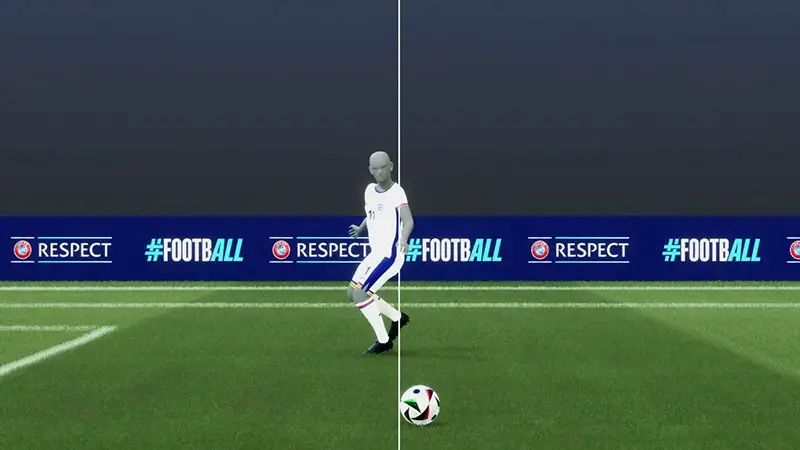Exploring the offside rule in soccer unveils a fundamental aspect that often sparks debates among fans, players, and referees. Understanding this rule is crucial for grasping the dynamics of the game and appreciating the strategic maneuvers on the field.
In soccer, the offside rule plays a pivotal role in regulating player positioning and ensuring fair play. Navigating the nuances of the offside rule can shed light on why certain plays are deemed legal or offside, influencing match outcomes.
By delving into the intricacies of this rule, soccer enthusiasts can enhance their comprehension of the sport and engage in insightful discussions about controversial calls and tactical decisions.
Stay tuned to uncover the essence of the offside rule and its impact on the beautiful game of soccer.
Deciphering the Offside Rule: Positions and Offenses Explained
Understanding offside positions and offenses in soccer is essential for players, referees, and fans alike. Here’s a comprehensive overview that includes key information about offside rules:
Offside Position:
An offside position occurs when a player is:
- Positioned in the opponent’s half of the field.
- Closer to the opponent’s goal line than both the ball and the second-to-last defender (usually the last outfield player).
Offside Offense
An offside offense is committed when a player in an offside position:
- Actively participates in play by either gaining an advantage or interfering with play.
- Receives the ball directly from a teammate who intentionally plays or touches the ball, unless:
- The player receives the ball directly from a goal kick, throw-in, or corner kick.
Passive vs. Active Offside
- Passive Offside: Merely being in an offside position without being involved in active play (e.g., not receiving the ball or impacting an opponent) is not penalized.
- Active Offside: Actively participating in play from an offside position, such as receiving a pass or interfering with an opponent’s ability to play the ball, results in an offside offense.
Exceptions and Special Cases
- Goal Kicks, Throw-Ins, and Corner Kicks: Players cannot be penalized for offside directly from these restarts.
- Goalkeepers: Goalkeepers are exempt from offside considerations when they are in their own half of the field.
Timing and Movement
Players can move out of an offside position to avoid committing an offense. This requires understanding the timing of runs and the positioning of defenders relative to the ball.
Referee’s Decision
Referees and assistant referees make real-time judgments to determine offside offenses based on the player’s position when the ball is played to them. This decision-making process involves assessing the player’s position relative to the defenders and the ball at the moment of the pass.
Importance and Impact
Understanding offside positions and offenses enhances players’ strategic awareness and allows fans to analyze tactical decisions during matches. It also plays a crucial role in maintaining fairness and ensuring that attacking players do not gain an unfair advantage over defenders.
Historical Evolution of the Offside Rule
The historical evolution of the offside rule in soccer is a fascinating journey that reflects the sport’s development over time.
Origins of the Rule in Soccer
The offside rule has its origins in the early days of soccer in the 19th century. Initially, players could be in any position on the field, leading to chaotic gameplay.
To introduce structure and fairness, the offside rule was established to prevent goal-hanging and promote a more strategic approach to the game.
Major Amendments to the Offside Rule Over the Years
Over the years, the offside rule has undergone significant changes to adapt to the evolving nature of the sport.
One of the most notable amendments occurred in 1925 when the rule was modified to allow attackers to be onside if there were two defenders between them and the goal line at the moment the ball was played.
This adjustment aimed to encourage more attacking play and increase scoring opportunities.
Offside Rule Application and Enforcement
In offside calls, assistant referees play a pivotal role. They assist the main referee by monitoring the positioning of players in relation to the last defending player, ensuring fair play and adherence to the offside rule.
Their quick and accurate judgment is essential in determining offside offenses and maintaining the integrity of the game.
Roles of Assistant Referees in Offside Calls
Assistant referees are responsible for flagging potential offside infringements by raising their flags when an attacking player is in an offside position at the moment the ball is played to them.
They work in tandem with the main referee to make real-time decisions that impact the flow and outcome of the match. These officials undergo rigorous training to develop their understanding of the offside rule and enhance their ability to make split-second judgments.
Use of VAR in Offside Decision-Making
The Video Assistant Referee (VAR) technology has revolutionized offside decision-making in soccer. VAR provides a comprehensive review system that allows referees to assess critical moments, including potential offside situations, with the help of video footage and technology.
This system aims to minimize errors in offside calls and ensure fair play by providing referees with additional support and insights during challenging decision-making moments on the field.
Offside Exceptions and Special Cases
Offside exceptions and special cases in soccer cover specific scenarios where the offside rule either does not apply or is applied differently.
Here are some key exceptions and special cases:
Offside During Goal Kicks
It’s important to note that a player cannot be offside directly from a goal kick. This means that regardless of how far forward a player positions themselves before the goal kick is taken, they cannot be penalized for offside.
Offside During Corners
Similarly, during a corner kick, a player cannot be offside directly from the corner kick itself. This allows attacking players to position themselves strategically in the opponent’s penalty area without the risk of being offside from the corner delivery.
Throw-Ins
When a team takes a throw-in, the offside rule does not apply. This gives players the freedom to move into any position on the field without the restriction of being offside when the ball is thrown back into play.
Goal Kicks and Corner Kicks
As mentioned earlier, players cannot be offside directly from goal kicks and corner kicks. This exception allows for more fluid play during these set-piece situations without the complexity of offside decisions.
Strategies and Tactics Involving the Offside Rule
Strategies and tactics involving the offside rule in soccer play a significant role in both offensive and defensive aspects of the game.
Here’s a look at how teams utilize the offside rule strategically:
Employing the Offside Trap by Defenses
Employing the offside trap is a strategic move by defenses to catch attackers off guard. In this tactic, defenders move up the field quickly, attempting to catch attacking players in an offside position.
By holding a high defensive line, defenders aim to restrict the space available to attackers, creating an offside situation when the ball is played.
Counteracting the Offside Trap by Attackers
To counteract the offside trap, attackers must time their runs carefully to stay onside. By making well-timed runs or using deceptive movements, attackers can exploit gaps in the defense and avoid being caught offside.
Sprinting after the ball is played or dropping back to stay onside are common tactics used by attackers to outsmart the offside trap set up by the defending team.
Common Misconceptions About the Offside Rule
Understanding the offside rule in soccer can be tricky due to several common misconceptions. Here are some of the most prevalent misconceptions clarified:
Any Part of the Body Can Be Offside
- Misconception: Many people think that any part of a player’s body, including hands or arms, can be offside.
- Fact: Only a player’s feet and head are considered when determining offside position. The hands and arms do not count, so a player could have their hands or arms beyond the second-to-last defender without being offside if their feet are level.
Offside from Goal Kicks, Throw-Ins, and Corners
- Misconception: It’s commonly believed that a player can be offside from a goal kick, throw-in, or corner kick.
- Fact: Offside cannot be called directly from these restarts. Players are allowed to position themselves anywhere on the field without the risk of being offside until the ball is in play.
Being Behind the Ball is Offside
- Misconception: Some think that if a player is behind the ball when receiving a pass, they are offside.
- Fact: The offside position is determined relative to the second-to-last defender, not the ball itself. Therefore, being behind the ball does not automatically constitute an offside offense.
Offside Only Applies in the Opponent’s Half
- Misconception: There’s a belief that offside can only occur in the opponent’s half of the field.
- Fact: Offside offenses can happen anywhere on the field, including a player’s own half. The critical factor is the player’s position relative to the second-to-last defender at the moment the ball is played.
Offside Requires Active Participation
- Misconception: Some think that a player must actively participate in play to be offside.
- Fact: Simply being in an offside position and impacting the defenders’ ability to play the ball can lead to an offside offense being called. Active involvement, such as receiving the ball or interfering with play, is not necessary to commit an offside offense.
Offside from Goalkeeper’s Throws
- Misconception: It’s sometimes believed that players cannot be offside from a goalkeeper’s throw.
- Fact: Offside can be called from a goalkeeper’s throw. The offside position is determined based on the player’s position relative to the second-to-last defender at the moment the ball is released from the goalkeeper’s hands.
Frequently Asked Questions
What is the historical significance of the offside rule in soccer?
The offside rule was introduced to prevent goal-hanging and promote fair play by ensuring attacking players are not in an advantageous position. Over time, amendments have refined the rule to balance gameplay and encourage strategic maneuvers.
How do referees enforce the offside rule in soccer?
Referees use their judgement to determine offside violations by observing the position of attacking players relative to the second-to-last defender at the moment the ball is played. They signal offside with a raised flag and whistle to stop play.
What are common exceptions to the offside rule in soccer?
Exceptions to the offside rule include situations where players are in their own half, receiving the ball from a throw-in, or level with the second-last defender. Understanding these exceptions is crucial for players and spectators alike.
How can attackers counteract defensive tactics like the offside trap?
Attackers can outsmart the defense by making well-timed runs, staying level with the defensive line, and using deceptive movements to confuse opponents. Strategic positioning and communication among teammates are key to breaking through defensive traps.
Why is it important for fans to understand the offside rule in soccer?
Understanding the offside rule enhances fans’ appreciation of the game’s tactical nuances and strategic complexity. It allows viewers to analyze plays, appreciate skillful maneuvers, and engage in discussions about player positioning and attacking strategies.
Conclusion
Summing up the intricate details discussed earlier ensures a comprehensive understanding of the offside rule in soccer. Reviewing the historical journey, it’s evident that the rule’s essence lies in maintaining fairness and promoting attacking play.
Navigating through the amendments and exceptions clarifies the finer nuances, emphasizing the criteria around player positioning during critical game scenarios.
Revisiting the misconceptions reveals essential clarifications about body parts considered for offside decisions and scenarios where no offense is deemed.
The discourse on strategies and countermeasures underscores the tactical depth involved in leveraging offside calls to gain a competitive edge.
As the article concludes, readers are equipped with an enriched comprehension of the offside rule, empowering them to appreciate the strategic intricacies governing the beautiful game of soccer.








Brice Petersen